1939 REICHSGESETZBLATT, PART I, PAGE 777
Law concerning the Construction of the Administration in Austria
(Austrian Law).
of 14 April 1939
The Reich cabinet has enacted the following law, which is hereby promulgated:
Article I
The District Governments [Gaue].
Section 1
(1) Within the territory of the state of Austria, the following Reich districts [Reichsgaue] are established:
The Reichsgau Vienna, comprising the city of Vienna ; * * *
Section 2
The Reichsgaue are governmental administrative districts and self administrative bodies.
Section 3 .
(1) At the head of the Reichsgau is the Reich governor [Reichsstatthalter].
(2) The Reich governor is authorized to ask for information
from the authorities of the Reich special administration.....
and other public-legal corporations within the Reichgau and to bring to their attention the essential points of view and necessary measures. He can give them orders for his district within the
6682BO— **—70
1093
frame of the laws and within the directions of the supreme Reich authorities; the competent supreme Reich authorities are authorized to cancel the orders of the Reich governor.
(3) The powers under paragraph 2 cannot be transferred to government employees attached to him.
Paragraph 4
(1) The Reichgovernor directs the governmental administration as Reich administration under the supervision of the Reich Minister of the Interior and according to the directions of the Reich ministers within their fields of competence [Geschaeftsbe-reich].
(2) The authorities of the Reich administrations within the Reichsgau are attached to the Reich governor's office with the exception of the Reich Justice, Reich Finance, Reich Railway, and Reich Post Administration. The Reich governor heads those administrations and is represented within them by their authorized directors.
* * * * * * *
(5) The tasks and authorities of the supreme organs of the former Austrian provinces are transferred to the Reich governor, as far as the Reich minister of the Interior in agreement with the appropriate supreme Reich authorities does not transfer those authorities to them.
Paragraph 5
(1) The Reich governor by decree, with the consent of the Reich ministers involved and of the Reich minister of the interior as well, can make laws, so far as this does not contradict superior Reich law.
(2) The authority of the Reich governor in accordance with the Reichsstatthalter law of 30 January 1935 (Reichsgesetzblatt I, page 65) are not changed hereby.
Paragraph 6
(1) The Reich governor leads the self-administration of the Reichsgau under the supervision of the Reich minister of the interior.
(2) As a self-administrative body, the Reichsgau has to fulfill public tasks under its own responsibility.
(3) The Reichsgau is authorized to regulate its own affairs by means of statute.
(4) District Counsellors are at the disposal of the Reich governor for the area of self-administration.
Paragraph 7
The Reich governor is represented within the governmental administration by a general representative with official title, Government President [Regierungspraesident], who is a direct Reich employee, and within the self-administration by a general representative with the title District Captain [Gauhauptmann] ; he is an official of the Reichsgau as a self-administrative body.
Paragraph 8
(1) The administration of the Reichsgau Vienna is divided into the governmental administration and into the municipal administration.
(2) The Reichsgau Vienna as a self-administrative body is a united municipality [Einheitsgemeinde] and has at the same time the tasks of the municipal associations [Einheitsverbaende] of a higher order.
(3) The Reich governor is represented within the governmental administration by a general representative with the official title, Government President [Regierungspraesident] and within the municipal-administration by the first deputy major [Erster Beigeordneter] with the official title of Mayor [Buergermeister].
*******
Article III
Closing Regulations [Schlussbestimmungen] *******
Paragraph 14
The Reichsgaue must be established by 30 September 1939.
(2) The Reichsgaue are legal successors of the former Austrian provinces in accordance with Paragraph 1.
* * * * * * *
(4) . The duration of the decree of the Fuehrer and Reich Chancellor on the appointment of the Reich commissioner for the reunion of Austria with the Reich dated 23 April 1938 (Reichsgesetzblatt, I, Page 407) is herewith extended up to 30 September 1939.
330I-PS
Paragraph 18
(1) The Reich Minister of the Interior issues the necessary laws and legal and administrative regulations necessary for the execution and completion of this law.
Paragraph 19
This law is effective on 1 May 1939.
Berchtesgaden, 14 April 1939 The Fuehrer and Reich Chancellor Adolf Hitler
The Reich Minister of the Interior
Frick
The Deputy to the Fuehrer R. Hess
The Plenipotentiary for the Four Years Plan
Goering
General Field Marshall, Prime Minister of Prussia The Reich Minister of Finances Count Schwerin Von Krosigk The Reichminister and Chief of the Reich Chancellery
Dr. Lammers
Extracts from a law on the government of Austria, including the Vienna district and the authority of the governor
Authors
Adolf Hitler (Fuehrer, Reich Chancellor, Supeme Commander of Wehrmacht)
Adolf Hitler
Austrian nationalized German politician, leader of the National Socialist party and dictator of Germany (1889-1945)

- Born: 1889-01-01 1889-04-20 (Braunau am Inn) (country: Austria-Hungary; located in the administrative territorial entity: Archduchy of Austria above the Enns; statement is subject of: Adolf-Hitler-Geburtshaus)
- Died: 1945-04-30 (Berlin Führerbunker) (country: Nazi Germany; located in the administrative territorial entity: Berlin; statement is subject of: death of Adolf Hitler)
- Country of citizenship: Cisleithania (period: 1889-04-20 through 1918-11-11); First Republic of Austria (period: 1919-01-01 through 1925-04-30); Nazi Germany (end cause: death of Adolf Hitler; period: 1933-01-30 through 1945-04-30); Republic of German-Austria (period: 1918-01-01 through 1919-01-01)
- Occupation: painter (statement is subject of: paintings by Adolf Hitler); political writer; politician (reason for preferred rank: generally used form); soldier
- Member of political party: German Workers' Party (period: 1919-09-12 through 1921-07-11); Nazi Party (series ordinal: 556)
- Member of: Nazi Party
- Participant in: Aktion T4; Beer Hall Putsch; The Holocaust; ethnic cleansing
- Significant person: Albert Speer; Benito Mussolini; Eva Braun; Joseph Stalin
Wilhelm Frick (Minister of the Interior; chief of Nazi delegation, Reichstag; admin. Plenipotentiary)
Wilhelm Frick
German Nazi official (1877-1946)
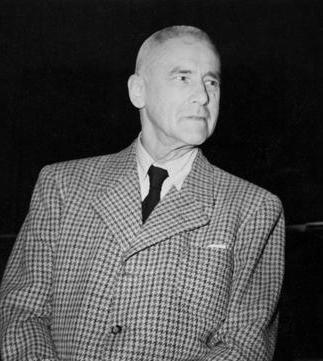
- Born: 1877-03-12 (Alsenz)
- Died: 1946-10-16 (Nuremberg)
- Country of citizenship: Germany
- Occupation: diplomat; lawyer; politician
- Member of political party: German Völkisch Freedom Party; National Socialist Freedom Movement; Nazi Party
- Member of: AGV München; Thule Society
- Participant in: Aryanization; Beer Hall Putsch; International Military Tribunal (role: defendant)
- Position held: Protectorate of Bohemia and Moravia (period: 1943-08-24 through 1945-05-04; replaces: Konstantin von Neurath); Reichsminister des Innern (period: 1933-01-30 through 1943-08-20; replaced by: Heinrich Himmler; replaces: Franz Bracht); member of the Reichstag of Nazi Germany; member of the Reichstag of the Weimar Republic
Rudolf Hess (Deputy to the Fuehrer; minister without portfolio)
Rudolf Hess
German Nazi leader (1894-1987)
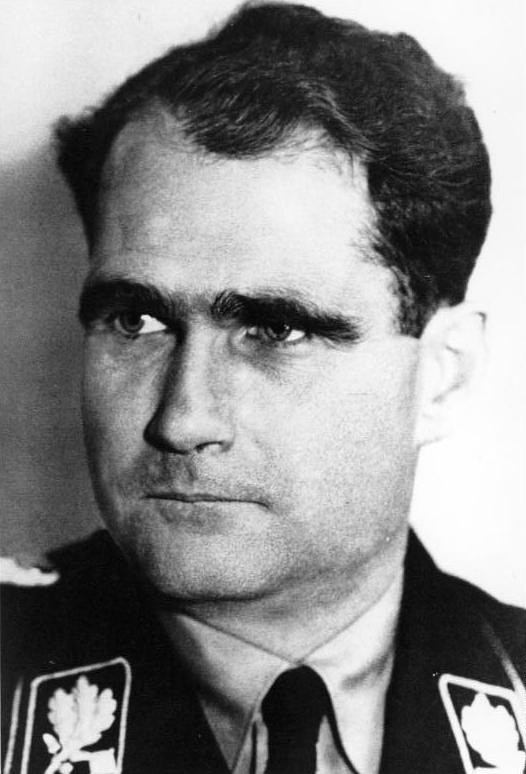
- Born: 1894-04-26 (Alexandria)
- Died: 1987-08-17 (Spandau Prison) (located in the administrative territorial entity: West Berlin)
- Country of citizenship: Germany
- Occupation: aircraft pilot; politician
- Member of political party: Nazi Party
- Member of: Thule Society
- Participant in: Beer Hall Putsch
- Military rank: lieutenant
Hermann Goering (Reich Marshal; Commander in Chief, Luftwaffe; Commissioner for Four-Year Plan)
Hermann Göring
German Nazi politician, military leader and convicted war criminal (1893–1946)
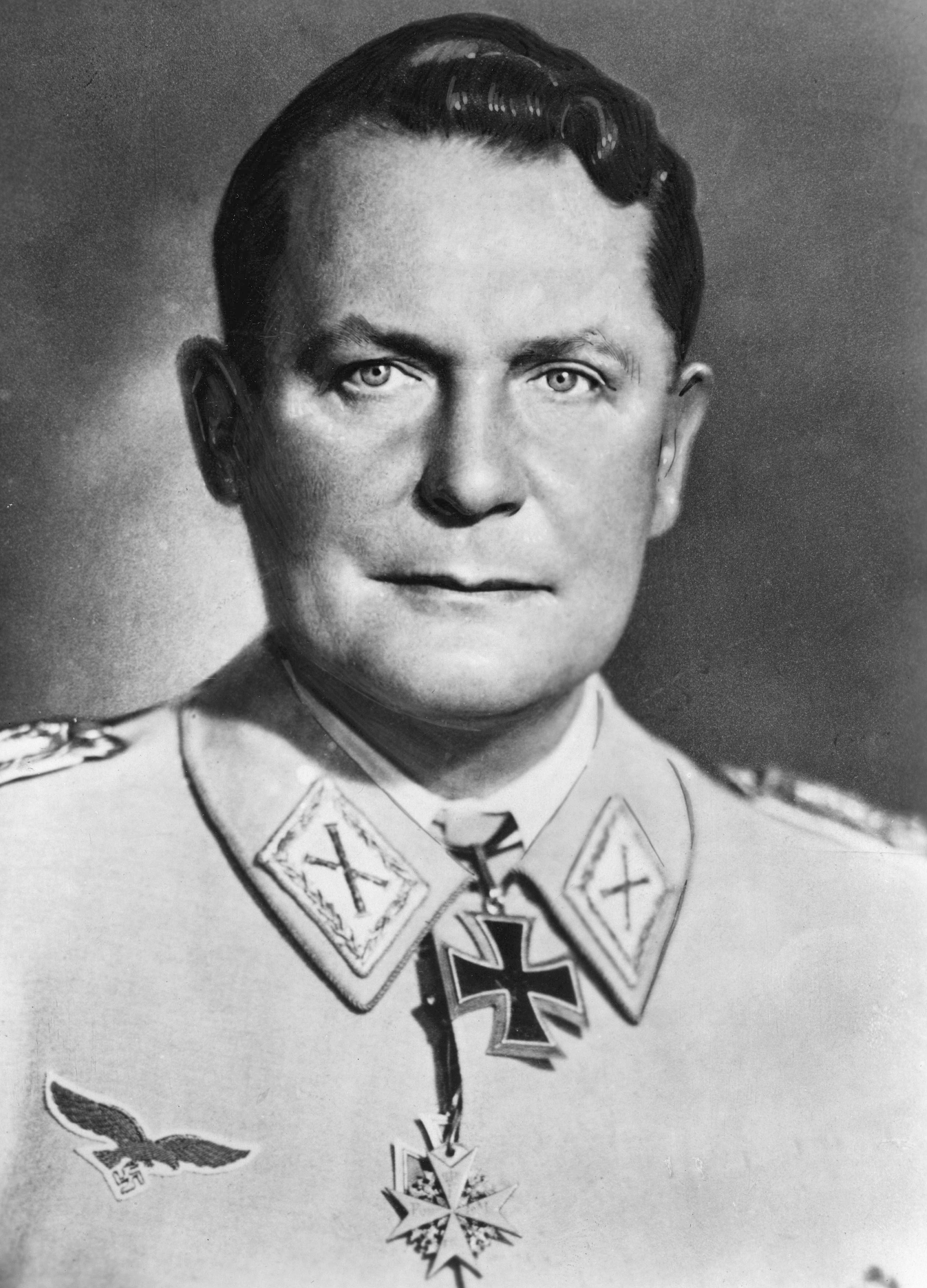
- Born: 1893-01-12 (Rosenheim)
- Died: 1945-01-01 1946-10-15 (Nuremberg Court Prison Nuremberg) (reason for deprecated rank: error in referenced source or sources; reason for preferred rank: most precise value)
- Country of citizenship: German Empire; Nazi Germany
- Occupation: aircraft pilot; art collector; politician; war criminal
- Member of political party: Nazi Party (period: 1922-11-01 through 1923-11-23, 1928-04-01 through 1945-04-29)
- Member of: Sturmabteilung
- Participant in: Beer Hall Putsch; Nazi plunder; genocide; war crime
- Significant person: Alma Hedin (role: friend)
Lutz Schwerin von Krosigk (Graf; Reich Minister of Finance)
Lutz Graf Schwerin von Krosigk
German nobleman, jurist, and senior Nazi government official (1887-1977)
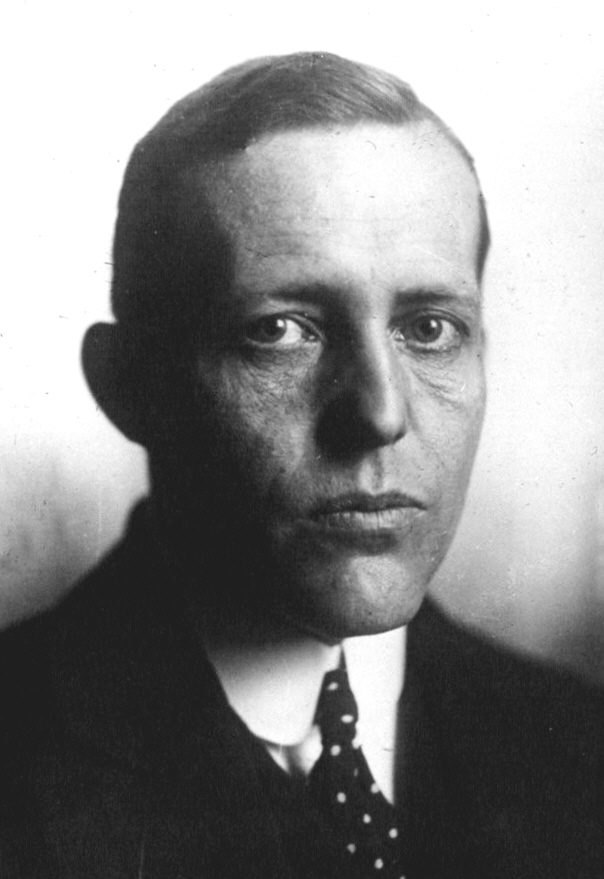
- Born: 1887-08-22 (Rathmannsdorf)
- Died: 1977-04-03 1977-03-04 (Essen)
- Country of citizenship: German Empire; Germany; Nazi Germany; Weimar Republic
- Occupation: diplomat; economist; jurist; military personnel
- Member of political party: Nazi Party (since: 1937-01-30)
- Participant in: Aryanization; Ministries Trial (role: defendant); Nuremberg Medical Trial (date: 1947-02-06; role: affiant)
- Significant person: Karl Brandt (role: acquaintance)
- Position held: Chancellor of Germany (period: 1945-05-01 through 1945-05-23; replaced by: Konrad Adenauer; replaces: Joseph Goebbels); Federal Minister for Foreign Affairs (period: 1945-05-02 through 1945-05-23; replaces: Arthur Seyss-Inquart); German Foreign Minister (period: 1945-05-02 through 1945-05-23; replaced by: Georg Dertinger; replaces: Arthur Seyss-Inquart); Leading Minister (period: 1945-05-01 through 1945-05-23)
Hans H. Lammers (Dr., Chief of Reich Chancellery)
Hans H. Lammers
German jurist, Nazi politician, and Head of the Reich Chancellery (1879-1962)
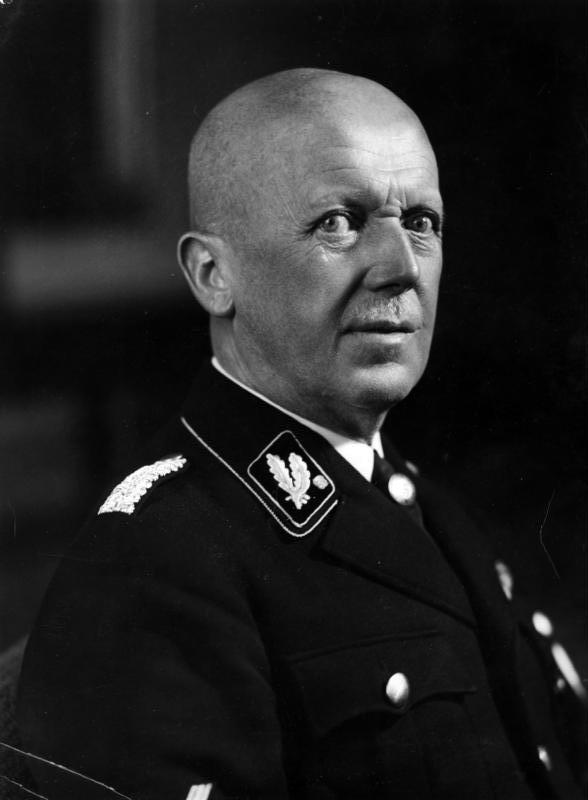
- Born: 1879-05-27 (Lubliniec)
- Died: 1962-01-04 (Düsseldorf)
- Country of citizenship: Germany
- Occupation: judge; jurist; lawyer; politician
- Member of political party: German National People's Party (until: 1932-01-01); Nazi Party
- Member of: Schutzstaffel
- Participant in: Ministries Trial (role: defendant); Nuremberg Medical Trial (role: affiant, witness)
- Significant person: Adolf Hitler (role: superior); Karl Brandt (role: colleague)
Date: 14 April 1939
Literal Title: 1939 Reichsgesetzblatt . . . Law concerning the Construction of the Administration in the Eastmark (Eastmark Law) of 14 April 1939
Defendant: Baldur Schirach, von
Total Pages: 3
Language of Text: English
Source of Text: Nazi conspiracy and aggression (Office of United States Chief of Counsel for Prosecution of Axis Criminality. Washington, D.C. : U.S. Government Printing Office, 1946.)
Evidence Code: PS-3301
Citation: IMT (page 2768)
HLSL Item No.: 453088
Notes:Schirach was appointed as governor of the Vienna district in 1940. This document was entered for judicial notice without an exhibit number.
Trial Issues
Administration & organization (all cases) Nazi regime (rise, consolidation, economic control, and militarization) (I…
Document Summary
PS-3301: Decree of 14 April 1939 (RGBl, 1939, I, p 777) signed by Hitler, Frick, Hess, Goering, SCHWERIN-KROSIGK, and LAMMERS, establishes the civil administration in Austria under the supervision of the Minister of the Interior. It authorizes the Reich Governor to make law by decree with the consent of the Minister of the Interior.
Law passed by Cabinet, 14 April 1939, signed by LAMMERS:
This document demonstrates consenting part.
PS-3301: DOMINATED COUNTRIES -- Administrative reorganization of Austria, law of April 1939